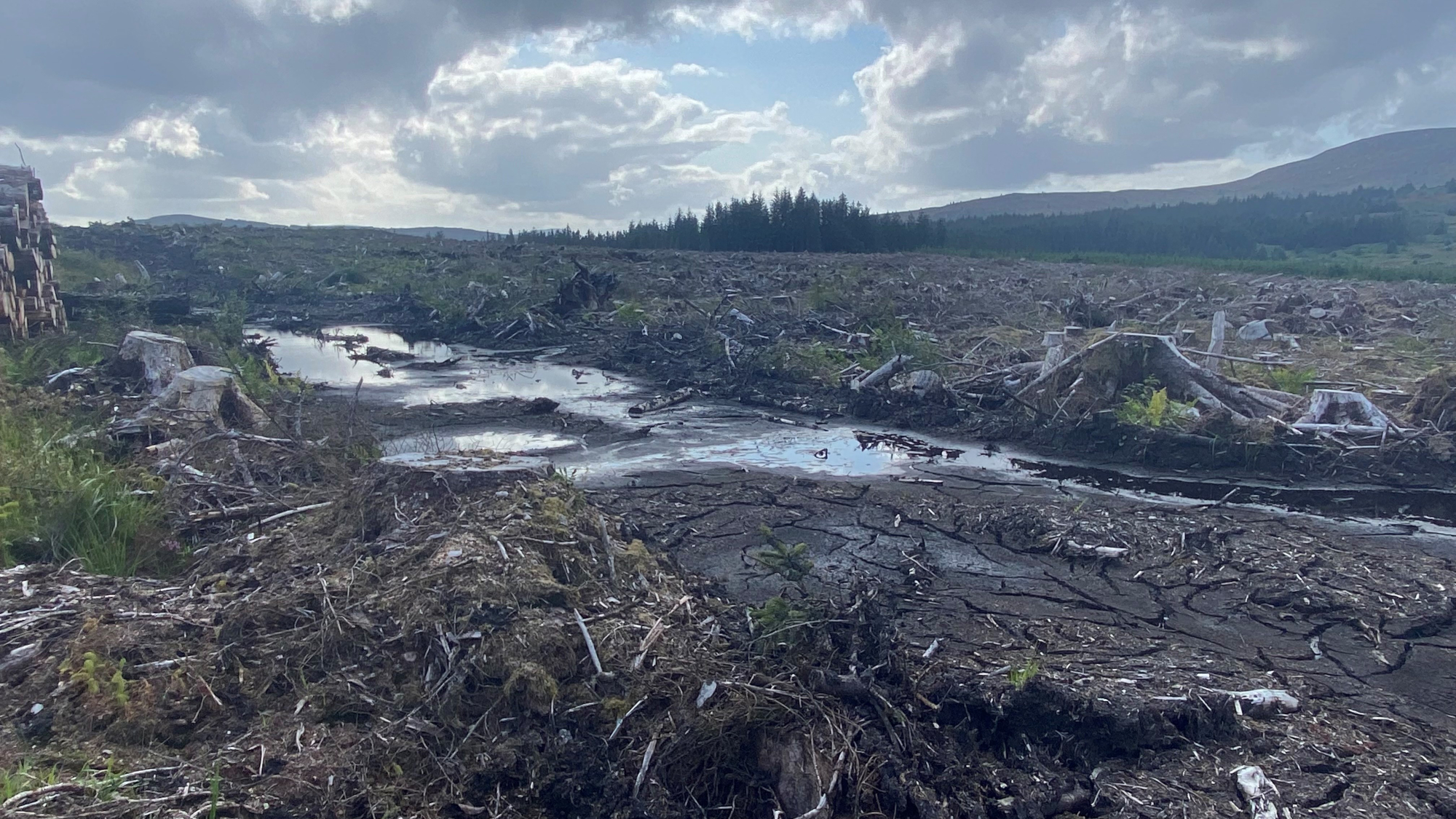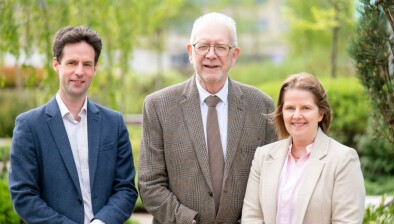Call for more community ownership of Scotland’s woodlands to combat influence of forestry giants

Clearfell in South West Scotland
New research highlights concern from across Scotland about the role of industrial forestry corporations and asset management organisations who increasingly dominate the ownership and management of Scotland’s forests.
The research concludes that more community ownership and management of woodlands, and more diverse ownership of forests across Scotland would increase community wealth and lead to greater environmental benefits, as well as producing more actively managed forests in Scotland.
In three new discussion papers, forestry experts Willie McGhee and Jon Hollingdale analyse the effectiveness and impact of industrial forestry on local areas as well as for meeting national carbon and timber targets.
Industrial forestry refers to predominantly single species, mostly unmanaged, Sitka Spruce forest, contrasting with more climatically resilient, sustainable, mixed species forestry.
The papers recognise that, while mixed productive forestry has an important part to play in reaching Net Zero and delivering economic and social opportunities, basic assumptions about the economic, climatic and environmental benefits of industrial forestry can be questionable.
The new papers were commissioned by Community Land Scotland.
Dr Josh Doble, director of policy and advocacy at the organisation, said: “These papers are designed to prompt discussion about industrial forestry and what an alternative forestry sector could look like in a Scotland which prioritises sustainable timber, community wealth building, climate and biodiversity.”
Mr McGhee, who is a forest manager and owner, a director of the Forest Policy Group and a trustee with the Community Woodlands Association, said in his report: “Questionable assumptions, and research gaps – particularly with respect to forest practice on peat soils – mean we may be overestimating the benefit of afforestation as a means of locking up carbon and offsetting carbon emissions.” This applies to both native woodlands and industrial forest.
The impact of trees on peat, the relatively short lifespan of timber products, and questionable claims regarding product substitution are subjects of ongoing scientific debate. Such uncertainty raises questions about the Woodland Carbon Code, the UK government mechanism for monetising forest carbon sequestration.
Forestry’s contribution to Scotland’s net zero targets is a key justification for Scottish Government subsidy support for afforestation, which, in turn fuels large-scale acquisitions for investment forestry groups.
The paper describes some practical ways in which Scottish forestry could more effectively capture and store carbon. These include changes to forestry management practice; reducing reliance on clear-felling, increasing the length of forest rotations, and a moratorium on planting peaty soils.
“We should be doing more intelligent and nuanced forest management to protect soils and soil carbon and to create diverse timber producing forests, both native and exotic conifer, managed on longer (harvest) rotations or as permanent forest”, Mr McGhee states.
Mr Hollingdale, an independent forestry and land use consultant and researcher, assesses in his paper the impact of investment forestry on the land market and forestry practice.
As his paper outlines, the financial advantages of land ownership and the largely unregulated land market facilitate speculation and are long-term obstacles to community wealth building. Recent price spikes and the limited supply of forest land add further barriers to the ambitions of communities.
He argues that Scottish Government policies betray a reluctance to tackle emissions at point of consumption or to facilitate a systematic and measured land use transition. Instead, policymakers remain wedded to the notion that large scale, extractive private investment is essential to deliver woodland creation and have focused on devising new incentives to attract external investment.
Dr Josh Doble commented: “If Scotland wants to be timber secure, and produce high quality timber for construction, how our forests are managed needs to be reformed. A clear way of reforming them would be to change some of the ownership patterns, allowing more local ownership and ensuring forests are actively managed over longer timescales to grow quality timber.”








